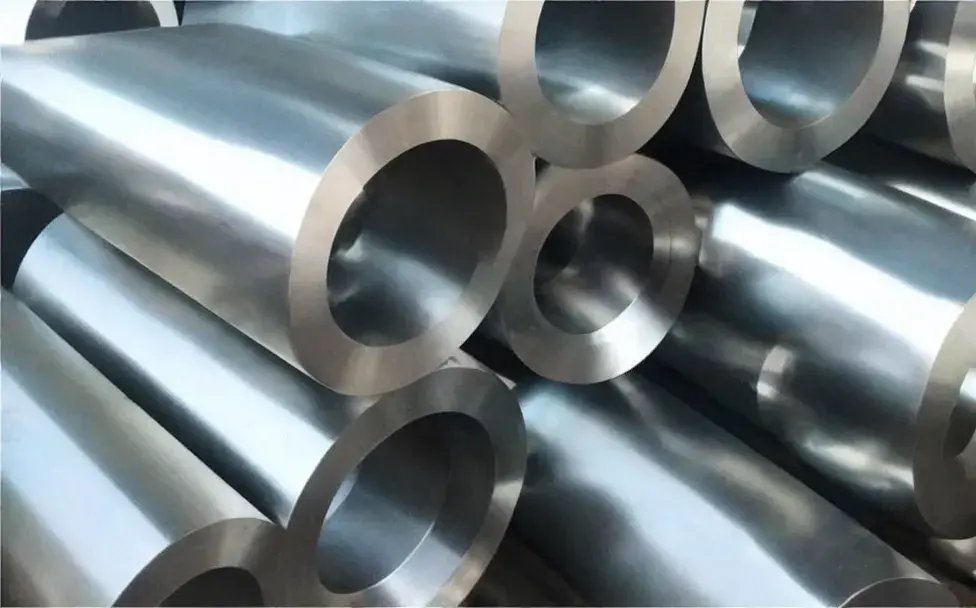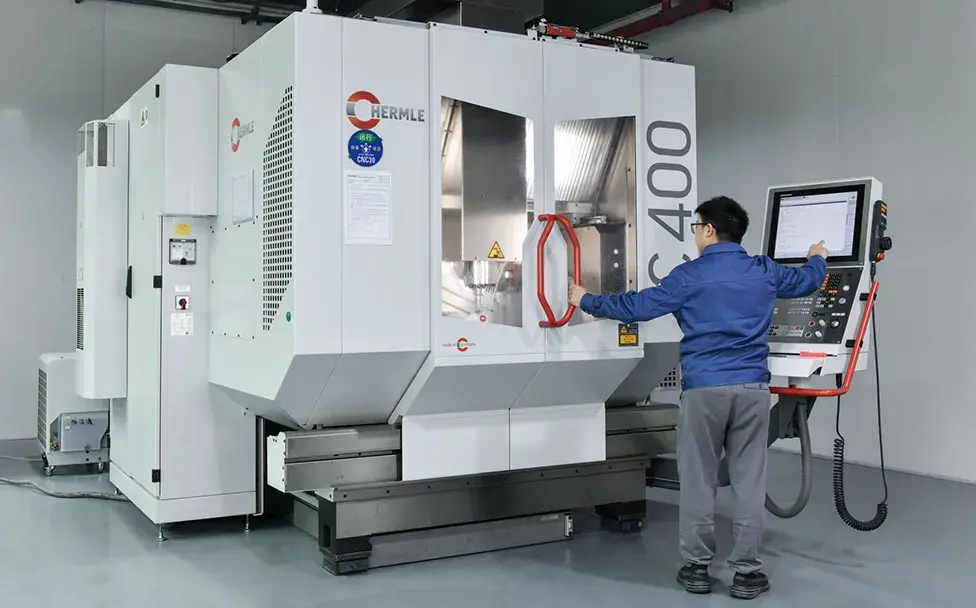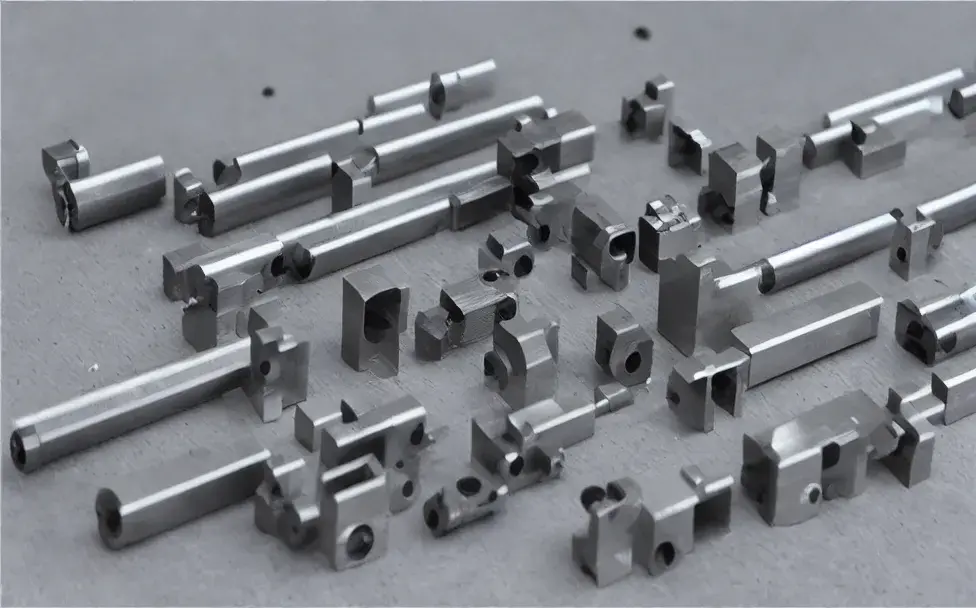The main damage form of the gear is the fracture of the tooth part and the excessive wear of the tooth surface. Gears generally need to undergo appropriate heat treatment to increase the load-carrying capacity and prolong service life.
After heat treatment, the gears should meet the following performance requirements:
- Higher bending fatigue strength and contact fatigue strength (anti-fatigue pitting).
- The tooth surface has high hardness and wear resistance.
- The gear core has sufficient strength and toughness.
The gear material and heat treatment have a great influence on the internal quality and performance of the gear, so it is necessary to choose the gear material reasonably and formulate the heat treatment process. The following mainly introduces the material selection and heat treatment process of steel gears.
Content Navigator
1.Selection of Gear Material

The selection of specific gear materials is mainly determined according to the size of the load when the gear is working, the level of speed and the precision requirements of the gear. The load size refers to the size of the gear transmission torque, which is usually measured by the unit compressive stress on the tooth surface. It is generally divided into light load, medium load, heavy load and super heavy load. When the gear rotates at a higher speed, the tooth surface and tooth root are subjected to more alternating stress times, and the wear of the tooth surface is more serious. Therefore, the size of the peripheral speed v of the gear rotation can be used as the scale for the fatigue and wear of the material, which is generally divided into: low-speed gears (1-9 m/s); medium-speed gears (6-10 m/s); high-speed gears (10~15m/s). The high precision of the gear means accurate tooth shape, small tolerance, tight meshing, smooth transmission and no noise. The gear accuracy of machine tools is generally 6~8 (medium and low speed) and 8~12 (high speed), and the gear accuracy of automobiles and tractors is generally 6~8.
(1) Light load, low speed or medium speed, low impact force and low precision general gears are made of medium carbon steel such as Q235, Q275, 40, 45, 50, 5Mn and other steels, and heat treatment such as normalizing or quenching and tempering Made of soft tooth surface gear, the normalizing hardness is 160 ~ 200HBS; the quenching and tempering hardness is generally 200 ~ 280HBS.The profile can be carried out after heat treatment, the process is simple and the cost is low. If the tooth surface hardness is not high, it is easy to break in, but the load-bearing capacity is not high. This kind of gear is mainly used in the standard series of gearbox gears, some secondary gears in metallurgical machinery, medium-load machinery and machine tools.
(2) Medium load, medium speed, bear a certain impact load, and gears with relatively stable motion, choose medium carbon steel or alloy quenched and tempered steel, such as 45, 50Mn, 40Cr, 42SMn and other steels, and also use low quenching such as 55Tid.60Tid permeable steel. Its final heat treatment adopts high-frequency or medium-frequency quenching and low-temperature tempering to make hard tooth surface gears. The tooth surface hardness can reach 50~55HRC. The deformation of gears quenched by induction heating surface is small. If the precision requirements are not high (such as below grade 7), it is not necessary to grind teeth. Most of the gears in machine tools are of this type. For surface-hardened gears, care should be taken to control the depth of the hardened layer and the reasonable distribution of the hardened layer along the tooth profile.
(3) Heavy load. For gears with high speed or medium speed and large impact load, use low carbon alloy carburizing steel or carbonitriding steel, such as 20Cr20CMnTi 20CN i, 18CrNiWA, 4OCr 30CMnTi and other steels. The heat treatment adopts carburizing, quenching and low-temperature tempering, and the gear surface obtains a high hardness of 58~63HRC. Due to the high hardenability, the gear core has high strength and toughness. The surface wear resistance of this kind of gear, the anti-fatigue strength, the bending strength of the tooth root and the impact resistance of the center are higher than that of the surface quenched gear, but when the heat treatment deformation is large and the precision is high, it is generally necessary to arrange grinding cut. It is suitable for cars with harsh working conditions. The gearbox and rear axle gear of tractors.
Compared with carburizing, carbonitriding has small heat treatment deformation, short production cycle and high mechanical properties. It can also be applied to medium carbon steel or medium carbon alloy steel. Therefore, many gears can be replaced by carbonitriding instead of carburizing process. Diesel locomotives, tanks, and gears on airplanes are heavier and worse than automobiles. The performance of materials is required to be higher, and alloy carburizing steel with high alloying elements should be selected to obtain higher strength and abrasion resistance.
(4) Precision transmission gears or hard-toothed gears that are difficult to grind (such as internal gears) mainly require high precision and small heat treatment deformation. Nitrided steel should be used, such as 35CMo, 38CMoAA and other steels. The heat treatment adopts quenching and tempering and ammoniation treatment. After nitriding, the hardness of the tooth surface is as high as 850-1200HV (equivalent to 65-70HRC), and the thermal stability is good (it can still maintain high hardness at 500-550°C), and it has a certain resistance corrosion. The disadvantage is that the hardened layer is thin and not resistant to impact, so it is not suitable for heavy-duty gears with frequent load changes, but is mostly used for stable loads and well-lubricated precision transmission gears or internal gears that are difficult to grind.
In recent years, due to the development of soft ammoniation and ion ammoniation processes, the process cycle has been shortened, the selection of steel types has become wider, and the number of nitriding gears has gradually increased.
2. Heat Treatment of Gear

2.1 Normalizing Treatment
Normalizing treatment can eliminate excessive stress inside the gear, increase the toughness of the gear, and improve the cutting performance of the material. Normalizing treatment is often used for gears made of high-quality carbon steel or alloy steel with a carbon content of Q 3% to Q 5%. The strength and hardness of normalized gears are lower than those of quenched or quenched and tempered gears, and the hardness is 163~217HB. Therefore, the requirements for mechanical properties are not high. It is not suitable for large-diameter gears that are quenched or quenched and tempered, and normalizing treatment is often used.
2.2 Quenching and Tempering Treatment
Quenching and tempering treatment is often used for gears made of high-quality carbon steel or alloy steel with a carbon content Q of 3% to 05%. Quenching and tempering treatment can refine grains, and obtain a uniform fine spherical pearlite-like structure with a certain degree of dispersion and excellent comprehensive mechanical properties – tempered sorbite. Generally, after quenching and tempering treatment, the hardness of the gear teeth can reach 220 ~ 285HB, and the hardness can be higher for smaller gears. The overall performance of the quenched and tempered gear is higher than that of the normalized gear, its yield limit and impact toughness can be about 40% higher than that of the normalized gear, and the strength limit and section reduction rate are also higher by 5% to 6% (for carbon steel). Quenched and tempered gears are easy to run-in during operation. The tooth root has a large margin of strength and strong impact resistance. It occupies a considerable proportion in heavy-duty gear transmission. In order to improve the anti-adhesion ability of the soft tooth surface gear and considering that the small gear is heavier than the large gear, the quenched and tempered pinion is often matched with the normalized or quenched and tempered large gear, and the hardness difference is usually 20 to 50 HB units.
2.3 Surface Quenching
After surface quenching, the gear must be tempered at low temperature to reduce internal stress and brittleness. The hardness of the tooth surface is generally 45~55HRC. Surface hardened gears have high load carrying capacity and can withstand shock loads. Generally, the blank of the quenched gear can be normalized or quenched and tempered first, so that the core of the gear tooth has a certain strength and toughness.
2.4 Carburizing and Quenching
Carburizing and quenching gears are usually made of alloy steel or high-alloy steel with a carbon content of Q 10% to Q 25%. After carburizing and quenching, the hardness of the tooth surface is 58~62HRC. Generally, gear grinding or honing is required to eliminate the deformation caused by heat treatment. These gears have high contact strength and bending strength, and can withstand large impact loads. Important gears in various trucks are often carburized and quenched.
2.5 Nitriding
Nitriding can improve the surface hardness, wear resistance, fatigue strength and corrosion resistance of gear teeth. The temperature of nitriding treatment is low, so the deformation of the gear is very small, and it only needs to be ground or does not need fine grinding. The materials of nitriding gears mainly include 38CMo414, 30CMoSiA4, 20CMnTi, etc. Since the thickness of the nitriding layer is about Q 15~Q 75mm), the hardened layer is in danger of peeling off, so its bearing capacity is generally not as high as that of carburizing gears, and it is not suitable for impact Use in places with heavy loads or strong wear.
2.6 Other heat treatment methods for steel gears
Steel gears can also be treated by overall quenching or cyanidation (carbonitriding). The overall quenching gear has higher hardness, but large deformation, poor toughness and impact resistance, so it is less used. Cyanide gears have the advantages of high hardness, good wear resistance, small deformation, and high productivity, and are suitable for carbon steel and alloy steel; but the hardened layer is brittle, not resistant to impact, and cyanide is highly toxic. Safety facilities must be provided.
3.Typical Gear Selection

3.1 Machine gears
Generally, machines need gear transmission. For low-speed operation (1~6m/s), lightly worn or less important gears such as indexing gears, large-size and large-modulus gears on heavy-duty machines, etc.), medium carbon steel or Medium carbon alloy steel can be quenched and tempered. Soft quenching and tempering (190~230HB) is used for large and medium-sized gears, and hard quenching and tempering (230~260HB) can be used for small gears. The processing route is: blanking-forging-normalizing-rough machining-quenching and tempering-tooth profile processing-grinding13.
3.2 Machine tool gears
Machine tool gears undertake the task of transmitting power, changing the speed and direction of motion, but compared with automobiles and tractors, the gears of machine tools are not too heavy, and the medium-speed operation (6~10m/s) is relatively stable, so they are often used Made of steel or 40Cr steel. Its process route: blanking – forging – normalizing – rough machining – quenching and tempering – rough machining – high frequency quenching and low temperature tempering – fine grinding.
3.3 Automotive gears
The working condition of the transmission gear of the automobile is worse than that of the machine tool gear, especially the gear in the main transmission system, which is subject to greater force and frequent impact, so it has higher requirements for materials. Due to the large bending and contact stress, all important gears need to be carburized and quenched to improve wear resistance and fatigue resistance. In order to ensure that the core has sufficient strength and toughness. The hardenability of the material is required to be high, and the hardness of the core should be between 35 and 45HRC. In addition, the production volume of automobiles is large, so when selecting steel materials, sufficient attention must be paid to the process performance under the premise of satisfying the mechanical properties. Practice has proved that 20CMnTi steel has high mechanical properties. After carburizing, quenching and low-temperature tempering, the surface hardness can reach 58~62HRC, and the core hardness is 30~45HRC. better. In order to improve the durability of the gear, after carburizing, quenching and tempering, shot peening can also be used to increase the surface compressive stress. The process route of carburizing gears is: blanking – forging – normalizing – cutting – carburizing, quenching and low temperature tempering – shot peening – grinding.
4.Summary
The above has analyzed the steel gear material and heat treatment process. In the production of gears, some gears with special performance requirements will also be encountered. Designers must conduct a comprehensive analysis and comprehensive consideration in accordance with the basic principles of material selection to select the most suitable gear. materials and heat treatment methods.



